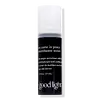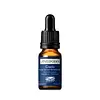What's inside
What's inside
 Key Ingredients
Key Ingredients

 Benefits
Benefits

 Concerns
Concerns

 Ingredients Side-by-side
Ingredients Side-by-side

Water
Skin ConditioningDipropylene Glycol
HumectantPropanediol
SolventCaprylic/Capric Triglyceride
MaskingGlycerin
Humectant1,2-Hexanediol
Skin ConditioningOlea Europaea Fruit Oil
MaskingBakuchiol
AntimicrobialDaucus Carota Sativa Seed Oil
EmollientMoringa Oleifera Seed Oil
EmollientLactococcus Ferment Lysate
Skin ConditioningTanacetum Annuum Flower Oil
MaskingCetearyl Alcohol
EmollientBetaine
HumectantC14-22 Alcohols
Emulsion StabilisingGlyceryl Stearate
EmollientXanthan Gum
EmulsifyingC12-20 Alkyl Glucoside
EmulsifyingPhenylpropanol
MaskingTetrasodium Iminodisuccinate
Levulinic Acid
PerfumingSodium Levulinate
Skin ConditioningGlucose
HumectantAcrylates/C10-30 Alkyl Acrylate Crosspolymer
Emulsion StabilisingTromethamine
BufferingSodium Chloride
MaskingEthylhexylglycerin
Skin ConditioningWater, Dipropylene Glycol, Propanediol, Caprylic/Capric Triglyceride, Glycerin, 1,2-Hexanediol, Olea Europaea Fruit Oil, Bakuchiol, Daucus Carota Sativa Seed Oil, Moringa Oleifera Seed Oil, Lactococcus Ferment Lysate, Tanacetum Annuum Flower Oil, Cetearyl Alcohol, Betaine, C14-22 Alcohols, Glyceryl Stearate, Xanthan Gum, C12-20 Alkyl Glucoside, Phenylpropanol, Tetrasodium Iminodisuccinate, Levulinic Acid, Sodium Levulinate, Glucose, Acrylates/C10-30 Alkyl Acrylate Crosspolymer, Tromethamine, Sodium Chloride, Ethylhexylglycerin
Water
Skin ConditioningAloe Barbadensis Leaf Juice
Skin ConditioningGlycerin
HumectantLactobacillus Ferment
Skin ConditioningBambusa Vulgaris Leaf Extract
Skin ConditioningBakuchiol
AntimicrobialSodium Hyaluronate
HumectantLeuconostoc/Radish Root Ferment Filtrate
AntimicrobialSaccharomyces/Xylinum/Black Tea Ferment
Skin ConditioningPersea Gratissima Oil
Skin ConditioningTocopherol
AntioxidantGlycine Soja Seed Extract
Skin ConditioningHelianthus Annuus Seed Oil
EmollientCitric Acid
BufferingMannitol
HumectantMaltodextrin
AbsorbentXanthan Gum
EmulsifyingSclerotium Gum
Emulsion StabilisingPotassium Sorbate
PreservativeSodium Benzoate
MaskingPropanediol
SolventDehydroacetic Acid
PreservativeBenzyl Alcohol
PerfumingCI 77163
Cosmetic ColorantCI 77891
Cosmetic ColorantCI 77491
Cosmetic ColorantCI 77492
Cosmetic ColorantCI 77499
Cosmetic ColorantMica
Cosmetic ColorantParfum
MaskingLinalool
PerfumingGeraniol
PerfumingWater, Aloe Barbadensis Leaf Juice, Glycerin, Lactobacillus Ferment, Bambusa Vulgaris Leaf Extract, Bakuchiol, Sodium Hyaluronate, Leuconostoc/Radish Root Ferment Filtrate, Saccharomyces/Xylinum/Black Tea Ferment, Persea Gratissima Oil, Tocopherol, Glycine Soja Seed Extract, Helianthus Annuus Seed Oil, Citric Acid, Mannitol, Maltodextrin, Xanthan Gum, Sclerotium Gum, Potassium Sorbate, Sodium Benzoate, Propanediol, Dehydroacetic Acid, Benzyl Alcohol, CI 77163, CI 77891, CI 77491, CI 77492, CI 77499, Mica, Parfum, Linalool, Geraniol
Ingredients Explained
These ingredients are found in both products.
Ingredients higher up in an ingredient list are typically present in a larger amount.
Bakuchiol is a plant-derived antioxidant (it's vegan!). It is often called the replacement for retinol although it is not part of the same family.
It has similar effects as retinol: skin smoothing, reducing discoloration, and preventing wrinkles. It does not cause as much irritation as traditional retinoids.
Bakuchiol works by breaking down free radicals and stimulating collagen production in skin.
Combining bakuchiol with retinol will not have adverse side effects. Studies show using them will just boost the benefits. Bakuchiol is also found to help stabilize retinol.
While bakuchiol does not make the skin more sun sensitive, we recommend wearing SPF on a daily basis.
Read more about traditional retinol
Learn more about BakuchiolGlycerin is already naturally found in your skin. It helps moisturize and protect your skin.
A study from 2016 found glycerin to be more effective as a humectant than AHAs and hyaluronic acid.
As a humectant, it helps the skin stay hydrated by pulling moisture to your skin. The low molecular weight of glycerin allows it to pull moisture into the deeper layers of your skin.
Hydrated skin improves your skin barrier; Your skin barrier helps protect against irritants and bacteria.
Glycerin has also been found to have antimicrobial and antiviral properties. Due to these properties, glycerin is often used in wound and burn treatments.
In cosmetics, glycerin is usually derived from plants such as soybean or palm. However, it can also be sourced from animals, such as tallow or animal fat.
This ingredient is organic, colorless, odorless, and non-toxic.
Glycerin is the name for this ingredient in American English. British English uses Glycerol/Glycerine.
Learn more about GlycerinPropanediol is an all-star ingredient. It softens, hydrates, and smooths the skin.
It’s often used to:
Propanediol is not likely to cause sensitivity and considered safe to use. It is derived from corn or petroleum with a clear color and no scent.
Learn more about PropanediolWater. It's the most common cosmetic ingredient of all. You'll usually see it at the top of ingredient lists, meaning that it makes up the largest part of the product.
So why is it so popular? Water most often acts as a solvent - this means that it helps dissolve other ingredients into the formulation.
You'll also recognize water as that liquid we all need to stay alive. If you see this, drink a glass of water. Stay hydrated!
Learn more about WaterXanthan gum is used as a stabilizer and thickener within cosmetic products. It helps give products a sticky, thick feeling - preventing them from being too runny.
On the technical side of things, xanthan gum is a polysaccharide - a combination consisting of multiple sugar molecules bonded together.
Xanthan gum is a pretty common and great ingredient. It is a natural, non-toxic, non-irritating ingredient that is also commonly used in food products.
Learn more about Xanthan Gum